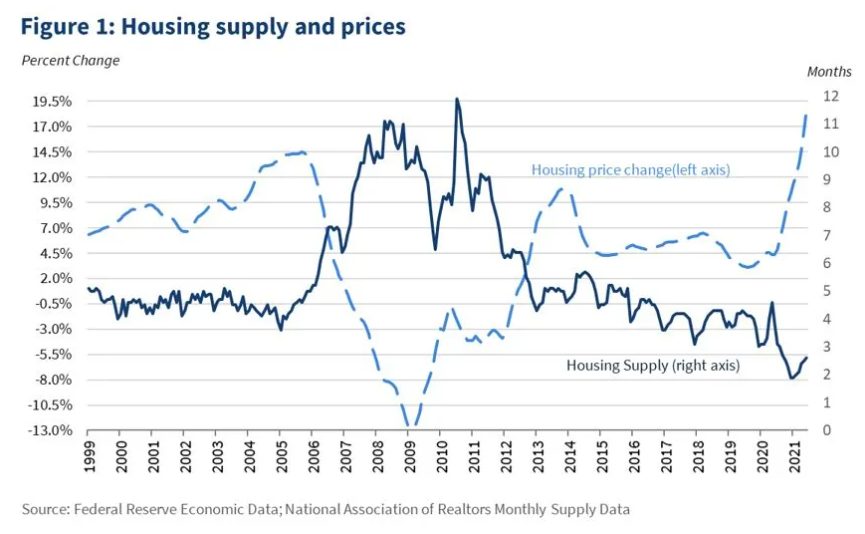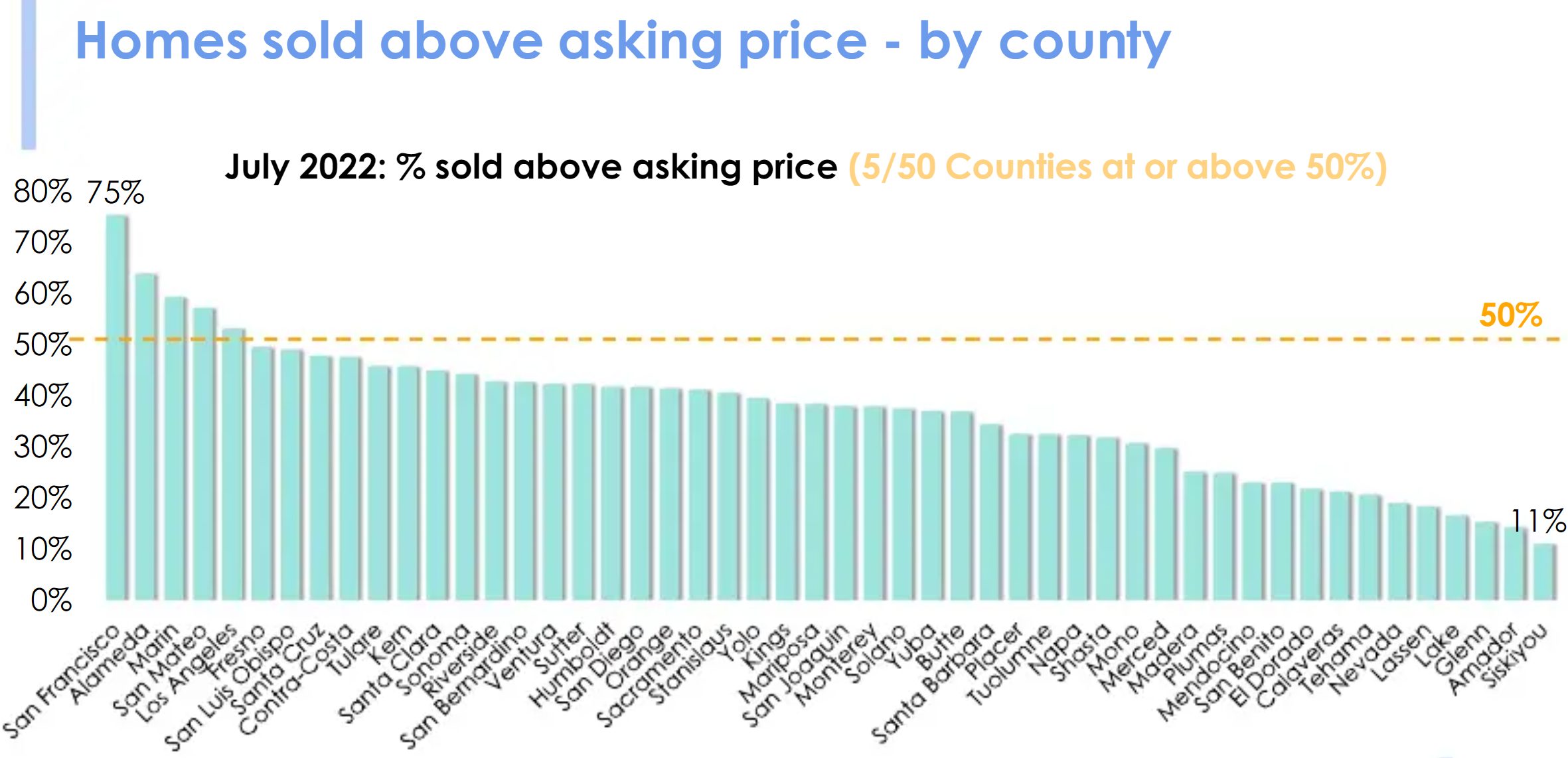Is the housing market going to crash like it did in 2008?
Ever since I got into real estate practically every client has asked me, “Are we in a housing bubble? When is it going to burst? Is the housing market going to crash like it did in 2008?” It’s kind of like the other scary, looming question Californians throw around at work happy hours: “Aren’t we overdue for a huge earthquake? When is that going to happen?” We shrug, knock on wood, and nervously laugh before moving on to the next, more comfortable topic.
It makes sense to wonder if we’ve had it too good for too long. And when the mortgage interest rate hit 6% last week—the highest it’s been since 2008—you better bet the housing market crash question is back on the table.
But the sky is not falling. Yet. And I’m going to argue that it’s not going to spiral out of control like it did in 2008.
The housing market has come a long way since 2008
Today’s economic conditions differ markedly from the conditions that led to the Great Recession. While the higher inflation and interest rates feel a bit like déjà vu, more stringent lending practices should prevent mass defaults and foreclosures. (For a refresher on the events of 2008, check out this Investopedia article.)
In the SF Bay Area, homeowners have the additional protection of strong tech incomes and even stronger home appreciation. Case in point: If you’ve been stalking your home estimate on Redfin or Zillow, you’ve probably noticed that your property hasn’t dropped in value. That’s because current sale prices are indeed decelerating, but not at a pace that would result in dramatic price depreciation over time.
Homeowners are less likely to default in today’s climate
Homes have appreciated a lot in the last few years, so today’s homeowners have built up a lot of equity. Basically, their property values are higher than what they owe to their banks. They’re not at risk of having their biggest asset/investment go underwater. And in the event of a worst-case scenario, equity-positive homeowners could sell their properties, pay off their mortgages with the sales proceeds, and move on relatively unscathed.
With mortgage underwriting being much more stringent now than it used to be in the notorious subprime days, fewer homeowners will find themselves in desperate situations. Lenders imposed more requirements on buyers post-2008, which means buyers of recent years were truly qualified for their loans. Additionally, these buyers opted for fixed-rate mortgages over riskier ARMs. Riskier mortgages make up a smaller percentage of all mortgages today – 10% are ARMs in 2022 vs. 30% back in 2005-2008.
The housing shortage keeps buyer demand and prices afloat
Housing inventory is at an all-time low as builders have failed to keep up with historical building trends for the past 20 years. According to the National Association of Realtors, the total shortfall could be 6.8 million units. So there are way too few homes for sale and too many people wanting to buy. It’s simple economics—when you have too little supply and too much demand, prices can’t help but rise.
Soaring interest rates have definitely helped curb demand, but the decline in demand won’t come close to offsetting inventory supply. So we’ll expect home sales to slow and prices to adjust, but prices won’t plummet.

Since 2008, housing supply has been on a steady decline while home prices have gone up. Source: Federal Reserve Economic Data, “Alleviating Supply Constraints in the Housing Market” by The White House
Factors to monitor closely in uncertain times
Struggling industries and unemployment.
As things currently stand, I’m not worried about the housing market tanking the economy. I’m more worried about the effects increasing inflation has on the costs of doing business across industries—and the downward spiral that could cause. If companies resort to massive layoffs for cost-cutting, then all that job loss coupled with increased living costs could lead to homeowners defaulting. Currently, the unemployment rate is quite low at 3.7% (back in July it hit a record low of 3.5%). If this number goes up along with interest rates, then I’d be wary of homeowners’ ability to make their monthly payments. We could see an increase in short sales and foreclosures. And if there’s not enough buyer demand to meet the new influx of housing supply then prices will inevitably fall. Investors flush with cash will undoubtedly take advantage, while the average consumer can only defer their homeownership dreams.
More interest rate hikes and riskier mortgages.
Rising interest rates have already altered the lending landscape in a short amount of time. Fearing being priced out, prospective buyers are considering riskier mortgage options. As of August 2022, over 9% of all mortgage applications were for ARMs, up from 3.3% this same time last year. This becomes concerning if applicants overstretch their budgets and overestimate their future earning power. For example, a homeowner could lock in a low-rate ARM today and then find themselves in a high-rate environment five years later. If they’re not earning significantly more, then they might default at the new rate, leading to foreclosure. We don’t want this scenario to unfold en masse.
Overvalued housing markets.
Foreclosures become more of a hot topic if you purchased or live in one of the nation’s most overvalued housing markets. (Fortunately for us in the SF Bay Area, we didn’t make this list.) In cities that saw a large influx of new residents during the pandemic, homeowners will see prices adjust as relocating buyers rethink moving altogether. In more vulnerable markets, homeowners have high debt compared to income, making them most at risk of foreclosing or selling at a loss.
Tech stocks and hiring freezes.
Bay Area real estate activity is highly correlated to the stock market. Here we have the nation’s most concentrated pool of tech workers. High incomes and stock returns prevent buyers from falling out of the housing market. When stocks nosedive, so do buyers’ appetites for real estate, since much of their purchasing power lies in their portfolios. Our strongest pool of buyers depletes further if tech companies continue tightening their pocketbooks and implementing hiring freezes. With the likes of Meta, Alphabet, Apple, and Microsoft slowing down hiring, we’ll see their respective employees slow down house hunting, too.
Taking all of the above into consideration, I remain cautiously optimistic that the housing market won’t crash like it did in 2008. Even if we do hit an economic downturn, I’m confident in the lessons we learned 14 years ago and trust the safeguards we’ve put in place since then. Let’s hope we don’t have to find out—and if we do (knock on wood)—I sure hope I’m right.
Need help with buying or selling in these uncertain times? Contact me or email fsun@intero.com. Check out my Instagram @francesrealestate for more real estate news and tips!


 Facebook
Facebook
 Twitter
Twitter
 Pinterest
Pinterest
 Copy Link
Copy Link
